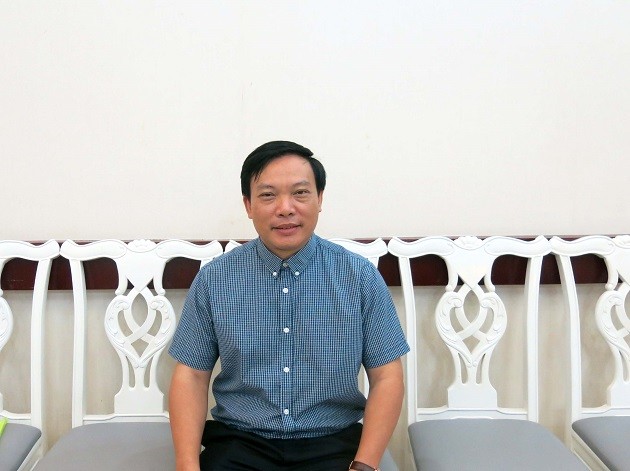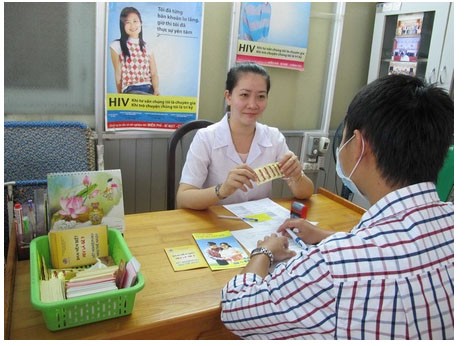(VOVWORLD) - Vietnam reported 6,800 new HIV carriers and 3,500 AIDS patients between January and September this year. The incidence of HIV infection in Vietnam has dropped two thirds over the past 10 years.
 Dr. Hoang Dinh Canh, Deputy Director of the Department of HIV/AIDS Prevention and Control of the Ministry of Health. (Photo: Thuy Chi) Dr. Hoang Dinh Canh, Deputy Director of the Department of HIV/AIDS Prevention and Control of the Ministry of Health. (Photo: Thuy Chi) |
HIV tests and counseling have been expanded in 15 provinces and cities and new types of testing have been added. Community organizations have conducted self-testing trials and the number of HIV testing laboratories has increased at the district level in key provinces and cities. To reduce HIV transmission, methadone maintenance therapy is being used as an effective alternative to anti-retroviral (ARV) therapy.
Hoang Dinh Canh, Deputy Director of the Department of HIV/AIDS Prevention and Control of the Ministry of Health, said: “We will continue to improve both the quality and quantity of methadone treatment facilities. The Health Ministry plans to train the staff at methadone treatment facilities to improve their knowledge of drug addiction and treatment methods to better their services.”
Bac Giang province now has more than 1,700 HIV carriers, 25% of whom have health insurance cards. The provincial center for HIV prevention and control has treated more than 600 HIV carriers and AIDS patients.
Tran Phuong Lan, the center’s Director, said: “We have advised the provincial Health Department to expand HIV testing and HIV counseling services to the community. Increasing counseling on mobile HIV testing in communes and wards gives people with a high-risk of HIV transmission greater access to HIV tests.”
To reduce the number of new HIV carriers and reach by 2020 the UN’s ambitious treatment goals, known as the 90-90-90 goals, provinces and cities have stepped up their communications programs, focusing particularly on persuading HIV carriers not to give up their ARV or methadone therapy.
 An HIV carrier receives counseling on ARV therapy. An HIV carrier receives counseling on ARV therapy. |
The 2020 goals are that 90% of all people living with HIV will know their HIV status, 90% of all people with diagnosed HIV infection will receive sustained antiretroviral therapy, and 90% of all people receiving antiretroviral therapy will have viral suppression.
Nguyen The Anh, Deputy Director of Hai Duong province’s Center for HIV/AIDS Prevention and Control, said: “The first goal is the most important. To realize this goal, we need to raise the awareness of people with a high risk of HIV transmission and give them access to HIV testing and counseling services. We are continuously strengthening communications that target groups with a high risk of HIV infection.”
Vietnam has embraced the UN’s 90-90-90 goals but reaching these goals by 2020 will be a challenge, according to Nguyen Hoang Long, Director of the Department of HIV/AIDS Prevention and Control.
“Vietnam was one of the first countries in the world to commit to the goals. We now have treated 150,000 of the 200,000 people who have been diagnosed with the HIV virus. Our goal is to treat 90% of them and this will be a challenge. We need to ensure that there is health insurance or other financial resources to cover the cost of ARV treatment, which is crucial for patients to maintain a low level of virus concentration in their blood,” Long noted.
Vietnam will continue to find foreign donors, allocate part of the state budget to buy sufficient ARV medicine, and encourage all HIV carriers to buy health insurance.